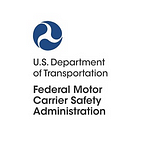Whether you want a cross-country adventure or a quick weekend getaway, bus travel is one of the most popular, least expensive, and safest ways to travel. However you choose to travel, always make safety a priority. Whether you are a passenger carrier driver, a travel planner or a motorcoach/bus passenger, there are key safety tips you should keep in mind to stay safe when traveling.
Bus drivers hold a Commercial Driver’s License (CDL), and as such are subject to Federal Motor Carrier Safety Regulations if they provide for-hire interstate transportation, often for travel and tourism. Read on to learn more about motorcoach/bus passenger safety and how passengers and travel planners can ensure they are riding with a safe motorcoach/bus operator.
What is a motorcoach?
The Moving Ahead for Progress in the 21st Century Act (MAP-21) defined “motorcoach” the same as an “over-the-road” bus, meaning a bus characterized by an elevated passenger deck located over a baggage compartment, as found in section 3038(a) (3) of the Transportation Equity Act for the 21st Century (49 U.S.C.5310 note), but does not include: a bus used in public transportation provided by, or on behalf of, a public transportation agency; or a school bus, including a multifunction school activity bus. As of 2020, the motorcoach industry is made up of approximately 1,700 companies operating over 27,000 vehicles.[i]
What are other types of commercial passenger carrier vehicles?
FMCSA has clarified the definition of “passenger carrier” within the Safety Measurement System (SMS) to include for-hire motor carriers that operate 9–15 passenger capacity vehicles. It excludes for-hire motor carriers that only operate 1–8 passenger capacity vehicles, private motor carriers that only operate 1–15 passenger capacity vehicles, and motor carriers with less than two percent passenger-carrying vehicles in their total vehicle fleet. These changes to the SMS improve the targeting of resources to passenger carriers that are subject to FMCSA’s safety oversight.
Travel Planners and Motorcoach/Bus Passengers: Look Before You Book
FMCSA urges all travel planners and passengers to “Look Before You Book” when planning bus travel and booking a bus company. Using FMCSA’s Bus Safety Search tool, travel planners and passengers can look up a bus company to view its safety history.
Here are things to keep in mind before you book your next trip:
- Choose a safe company. An interstate, for-hire passenger carrier that operates a motorcoach/bus must:
- Have both a USDOT number and operating authority registration from FMCSA
- Maintain adequate insurance coverage
- Provide accessible service, using buses equipped with wheelchair lifts and securement areas for individuals with disabilities in accordance with the Americans with Disabilities Act (ADA)
- The motorcoach/bus company should have either a rating of Satisfactory, Conditional, or Not Rated. A Satisfactory rating is the best rating. Bus companies with a Conditional rating may pose a higher safety risk. Bus companies with an Unsatisfactory rating should not be operating. Bus companies listed as Not Rated have not had their operations fully evaluated against FMCSA’s safety fitness standards.
- FMCSA measures the safety performance of bus companies in key safety and compliance areas as part of the Agency’s Safety Measurement System (SMS). This system provides an assessment of a motor carrier’s safety and compliance performance in the form of Behavior Analysis and Safety Improvement Categories, or BASICs. A symbol (⚠️) displayed in a BASIC indicates the company has fallen below a safety threshold which may cause the company to be prioritized for further monitoring.
2. Find a safe driver. Drivers who are employed by for-hire passenger carrier companies must have:
- A valid operator’s license. In addition, Federal regulations require a driver to have a CDL, with a passenger endorsement when operating a vehicle designed to transport 16 or more people, including the driver.
- A valid medical examiner’s certificate. Bus drivers must possess a medical examiner’s certificate that indicates they are in compliance with applicable physical qualification requirements.
3. Plan a safe trip. It is important to allow enough time to reach your destination safely. Interstate motorcoach/bus drivers MUST comply with Federal hours-of-service regulations, which state:
- No interstate motorcoach driver can drive more than 10 consecutive hours.
- No interstate bus driver can drive for any period after having been “on duty” for an extended period: 60 hours in any 7 consecutive days (if the driver’s employer does not operate every day of the week); 70 hours in any 8 consecutive days (if the driver’s employer does operate every day of the week).
Passenger Carriers and Drivers: What You Should Know
Bus travel is among the safest forms of passenger transportation. However, safety requires constant attention and awareness. If you are a passenger carrier or driver, take a look at FMCSA’s wide range of educational materials and technical assistance to improve understanding of safety requirements, including safety publications and passenger carrier regulatory information. Please note that these online resources are not intended to substitute for the actual regulations. You can find information and search the full Federal Motor Carrier Safety Regulations (FMCSRs) under Regulations on the FMCSA website.
Report Violations
Consumers can report complaints for Passenger Carrier violations on the National Consumer Complaint Database (NCCDB), or immediately report unsafe bus drivers or companies at FMCSA’s Consumer Safety Hotline at 1–888- DOT-SAFT.
[i] https://www.buses.org/assets/images/uploads/pdf/Motorcoach_Census_Survey_2020.pdf
